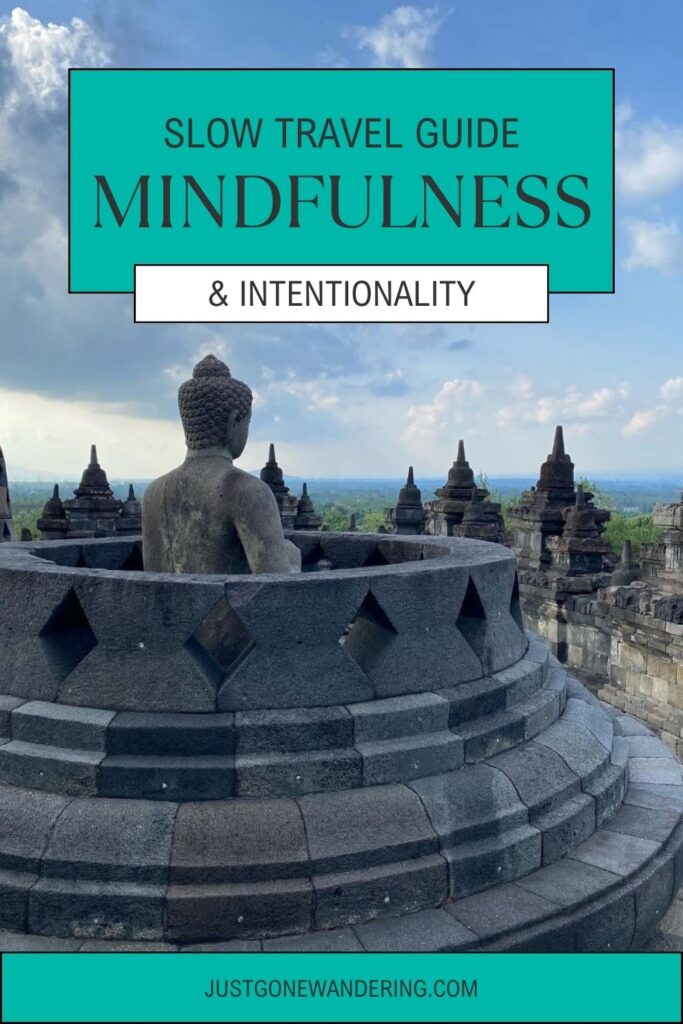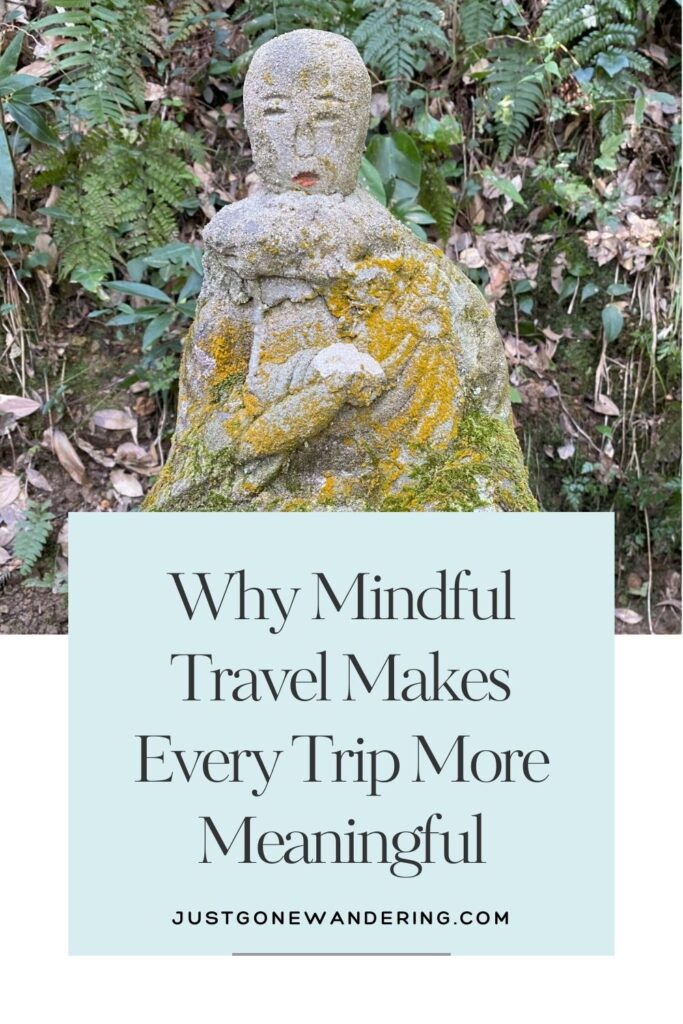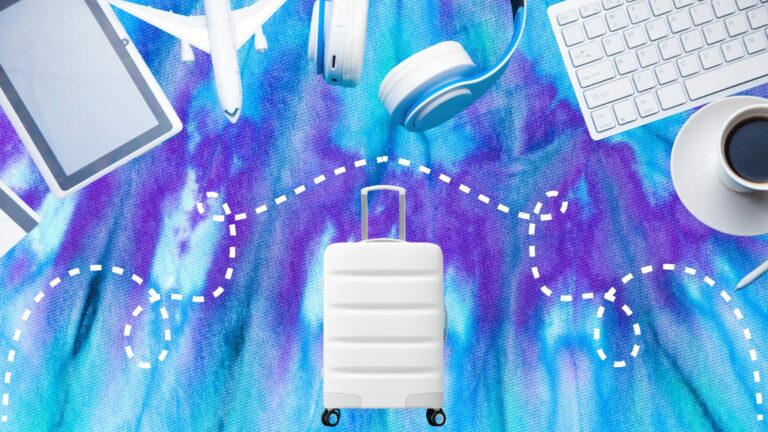How to Practice Mindful Travel: Everyday Tips for Intentional Explorers
Traveling isn’t just about ticking destinations off a list.
If you’ve ever come back from a trip feeling more drained than inspired, you’re not alone.
Practicing mindfulness while traveling can completely shift this dynamic, helping you connect more deeply with each moment on your trip. Whether you’re wandering busy street markets or soaking in the stillness of a remote mountain retreat, adopting mindful travel practices can make your journey more fulfilling.
Curious about how? Keep reading!
*Photos in this post are places I’ve visited that have felt particularly spiritual or relaxing to me!

Mindfulness Travel Journal Prompts
Mindfulness Journal Prompts for Travelers is a printable, downloadable collection designed to help you reflect on your journey with clarity and purpose. From setting intentions before you leave to savoring quiet moments during your trip and processing your experiences when you return, this journal is your companion for thoughtful travel.
Just Gone Wandering is supported by readers! This post contains affiliate links. If you click on a link and buy something, I get a small percentage at no extra cost to you. Your support helps keep this blog running— thank you! Read full disclosure here.
Understanding Mindful Travel
Mindful travel isn’t about doing less: it’s about doing things differently. When you travel mindfully, you make conscious choices in how you experience each moment, from sipping coffee at a street-side café to connecting with locals, or simply pausing to notice the sound of waves when you’re wandering a busy beach.
It’s a shift from chasing to-do lists to being present. This can truly transform your travels from just moments checked off a list to experiences you enjoy remembering for years to come.
The Benefits of Mindful Travel
Mindful travel gives more than just pretty pictures for your scrapbook or social media…it feeds your soul.
Emotionally, mindful travel allows you to stay grounded and enjoy the small joys travel offers. Imagine soaking in the serenity of a mountain sunrise or feeling genuinely grateful for a stranger’s hospitality. Those aren’t just fleeting moments; they’re transformative experiences.
Psychologically, mindful travel helps reduce travel-related stress.
You know the kind: the anxiety of juggling itineraries, delays, or that overwhelming need to “see it all” while also somehow still having a good time on vacation.
With mindfulness, you start noticing that things like delays are just pauses, moments to breathe. And if you’re someone who often battles burnout when traveling (especially if you’re traveling for months at a time), you’ll appreciate how much calmer mindful travel feels.
Beyond calmness, mindful travel makes your experiences more meaningful.
Instead of skimming the surface—hopping from landmark to landmark—you’re diving into culture or nature on a personal level. Engaging deeply like this often leaves you building memories that actually matter, like a quiet conversation with a shop owner or the joy of stumbling across an untouched walking trail in a quiet forest.
🌟Want more reasons to give mindfulness a try? Here’s a thoughtful exploration of how mindfulness enhances the travel experience over at Forbes.

How Mindful Travel Differs from Traditional Travel
If traditional travel was all about cramming photo ops into your schedule, mindful travel says, “Hey, slow down.”
Traditional travel often approaches destinations like items on a checklist. “Did you see this monument? Did you visit this famous spot?” While it’s great to seek iconic places, ask yourself this: do you remember how it felt to be there? Or were you too busy snapping the perfect shot and rushing to the next spot?
For me, I tend to run into this problem the most whenever I do a day trip or a group guided tour. We’re rushing so fast from place to place that I don’t have time to slow down and really experience the locations we’re at. While I learn a lot about the history and culture through the tour guide (good!) I also miss out on really experiencing that specific place in a meaningful way (bad!).
Mindful travel is about embracing fewer activities more intentionally. You’re fully there, both physically and mentally.
Another key difference is how interaction feels during mindful travel. Instead of surface-level chat, you’re opening the door to genuine conversations. Maybe you’ll learn the story behind a mural from the artist or find out a local’s food spot recommendation that isn’t Google-able. It’s giving yourself the opportunity for a personal connection with people.
Finally, as a mindful traveler, you care for places and people, not just consume them. This means being conscious of sustainability, humbly respecting cultural norms, and even picking destinations where slow and mindful travel are becoming a known practice, like those explored in Smaller Earth’s article on mindful travel.
Turn off autopilot. Because when you travel mindfully, you’re no longer at the mercy of time. You’re creating moments that stick with you forever.
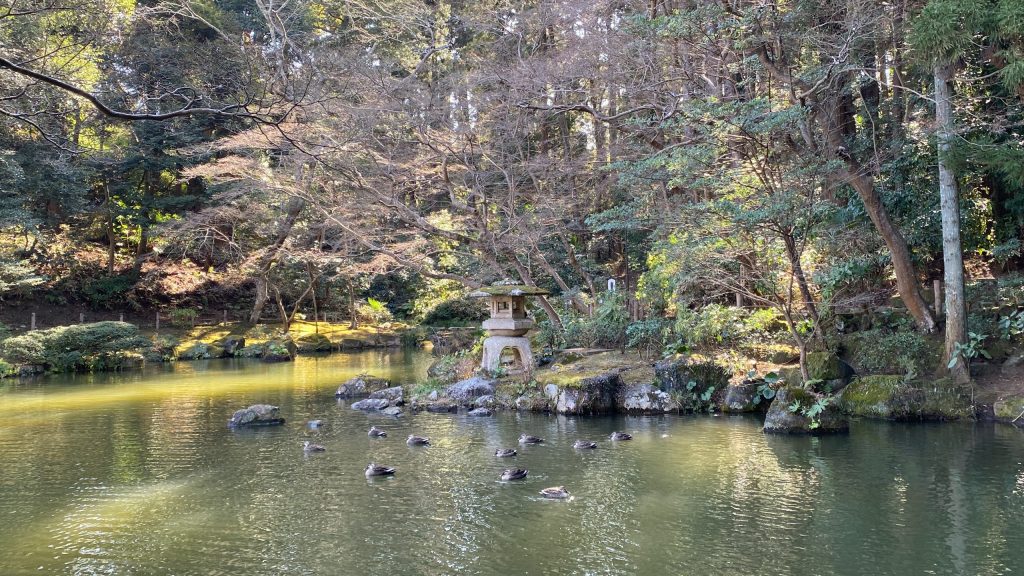
How Slow Travel Naturally Enables Mindfulness
Picture this: instead of jamming as many activities as possible into a single day, you strip your itinerary down to the essentials.
No rushing, no ticking boxes. Just committing to truly be where you are. That’s slow travel in a nutshell, and it’s an absolute game-changer if mindfulness while traveling is what you’re aiming for.
By intentionally choosing a slower pace, you’ll find it easier to tune in to the present moment, grounding yourself whether you’re road-tripping through valleys or lingering over a local meal.
What is Slow Travel?
Slow travel is a philosophy that’s gotten more popular recently, partly as a response to the Instagramafication of the travel world.
At its core, slow travel focuses on quality over quantity. It’s about immersing yourself in a destination, acknowledging the beauty of the present moment over the compulsion to check “must-see” landmarks off a list.
This approach builds depth in experiences rather than breadth. Instead of speeding through cities or landmarks, you stay longer in one place, observe your surroundings, interact with locals, and savor everything fully.
Slowmads, people who travel full-time at a slow pace, showcase this beautifully.
Rather than move cities every week, slowmads stay a month or more in one location. Rather than go out every day seeking new tourist attractions, slow travelers pick three or four high quality locations and spend the rest of their time just living life in a fabulous new place.
If you’ve ever wanted travel to feel more meaningful, slow travel is your answer.
Keep reading: What is Slow Travel?
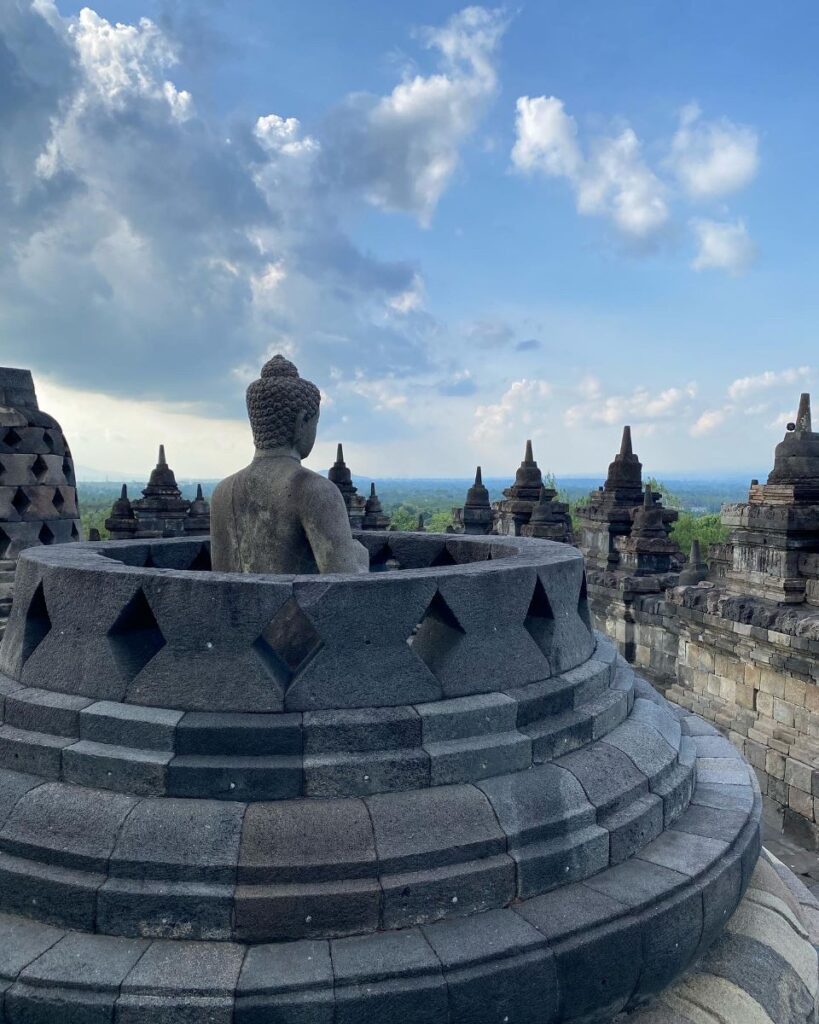
Practical Tips for Slow Travel
Curious about how to step into the slow travel mindset? It’s simpler than you think—though breaking free from the “I need to see everything!” mentality means unlearning some deeply ingrained habits.
Here are a few tips:
- Stay longer in one place.
Instead of hitting five destinations in seven days, pick one or two places and spend more time exploring them. Whether it’s wandering a city at different times of the day or visiting the same café regularly, familiarity allows for deeper connection and mastery over your experience. Booking a month’s stay at an apartment versus a week at a resort is a great idea. - Take local transportation—or walk.
Trains, buses, and walking routes create a chance to absorb much more than zipping around in taxis. Think of the journey itself as a meaningful part of your exploration. Even going overland between countries can be a grand adventure. - Plan less.
Super-detailed itineraries can actually rob your trip of joyfulness. Give your days breathing room for unexpected moments, like running into a local market or discovering a hidden park. Less planning allows mindfulness to naturally find its way into your days through spontaneity. - Engage with locals.
Ask questions, join a workshop, or simply chat. Interactions with people who live nearby often come with surprising insights and memories you wouldn’t otherwise find. Feeling shy? A cooking class or cultural event can push you to connect without forcing yourself to go outside your comfort zone. - Invest in local businesses/services.
Eating at family-run restaurants or staying in boutique accommodations makes supporting those who live there part of your experience. It’s travel, yes, but with intention. - Turn off your devices.
Yeah, this one is tricky, since smart phones make travel MUCH easier nowadays, but it DOES work wonders. Consider phone-free mornings, or just setting your status as ‘away’ and letting yourself breathe. Wait to post your Instagram photos until you get back home, rather than uploading them immediately while you’re still on your trip.
These steps don’t just enrich your travel, they slow you down in a way that serves your mental well-being. For more inspiration, check out how travelers implement mindful moments over at Swell Women’s guide to embracing slow travel.
Perhaps most importantly? Let yourself adjust to slow travel, and enjoy the pace. It’s not about instant transformation but allowing gradual exploration to flourish.
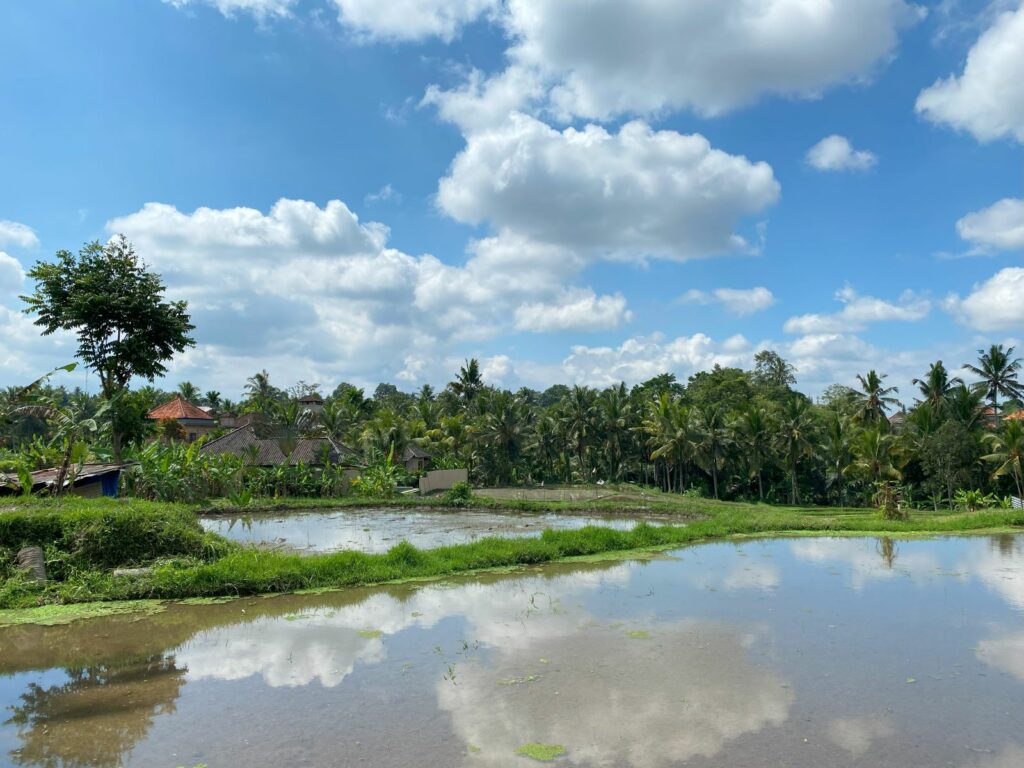
Meditation Techniques for Travel
Meditation doesn’t have to mean finding a calm corner or sitting in stillness for hours. It’s adaptable, even to the noisy, chaotic environments of travel.
Here are a few techniques to try:
- The Breathing Triangle.
Visualize a pie chart divided into three equal parts—inhale for one-third, hold for one-third, exhale for one-third. Matching your breaths to this rhythm can calm both mind and body, even during turbulence (on or off the highway). - Body Scan Meditation.
Sit back, close your eyes, and focus on each part of your body, one section at a time. Start with your toes and work your way up. This practice can reduce any stiffness or tension from sitting too long. Bonus: No one will even notice you’re doing it. - Mantra-Based Focus.
Choose a simple word or phrase—like “calm,” “presence,” or “steady”—and repeat it mentally while focusing on your breathing. It’s subtle but keeps anxious thoughts from creeping in. - Five-Sense Grounding.
Feeling anxious during a bumpy bus ride? Try naming five things you can see, four you can hear, three you can touch, two you can smell, and one you can taste. It pulls your focus back to the moment and eases your nerves.
With each step you take to infuse stillness into your overland adventures, you’ll see the road—and yourself—in a whole new way.
Building Sustainable Long-Term Travel Through Mindfulness
Building sustainability into your travel routines isn’t just about carrying a reusable water bottle (though that’s a great start). You need to start making mindful decisions that enrich your experience while respecting the world you’re exploring.
Long-term or frequent travel can lead to burnout, disconnection, or even a sense of guilt for your environmental footprint (all those flights!). Practicing mindfulness while traveling not only keeps you grounded, but it can also shape a more intentional (and enjoyable) journey.
Reflecting on Travel Experiences
Ever return home and realize that, despite thousands of photos, you barely remember how any of it felt?
It’s easy to let the days blur together, especially when you’re zipping from one highlight to the next. That’s where reflection comes in. Taking time to pause and process your travel experiences can make them richer and more memorable in the long run.
Start simple: carry a journal.
- Jot down the small details that made you smile—a lively conversation with a local, the glow of the sunset on ancient ruins, the smell of a new dish you tried. These notes can often become your most vivid and cherished travel memories.
- Feeling stuck? Start with prompts like, “What surprised me today?” or “How did I step out of my comfort zone?” There’s no right or wrong here, only the experience of slowing down and recording moments worth savoring.
- More of a visual person? A travel junk journal is a great alternative to loads of text and writing.
Looking for ideas to deepen your reflective practice? Check out this collection of Mindfulness Travel Journal Prompts to explore your thoughts before, during and after your trip.
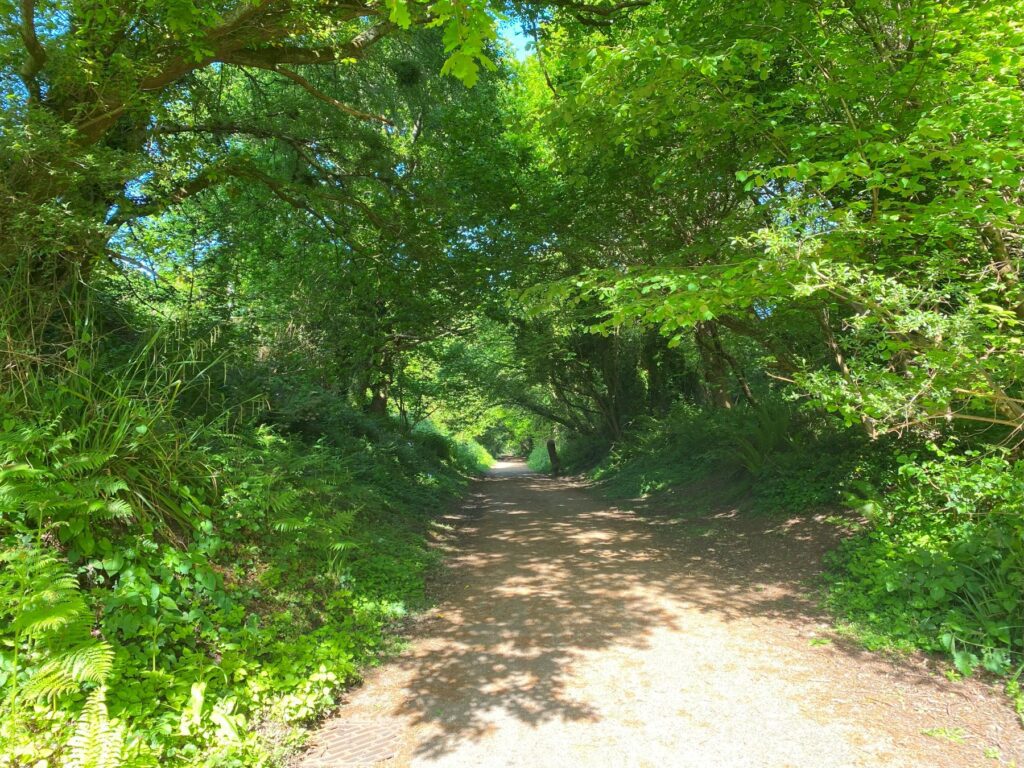
Connecting with Local Cultures Mindfully
Fostering genuine respect for the cultures you’re stepping into is an excellent way to foster mindfulness. Tourism, when done thoughtlessly, can exploit rather than appreciate. By turning mindfulness outward, you genuinely connect with local communities in ways that leave a positive impact.
To engage with local cultures respectfully, keep these things in mind:
- Observe before engaging.
Step into a space and give yourself a moment to adjust. Watch how locals interact rather than diving in immediately. Whether it’s quietly observing rituals at a temple or checking norms at a street market, this pause shows respect. - Ask questions (but with care).
Locals are often happy to share traditions when approached humbly. Ask open-ended questions and express genuine interest. A phrase like, “Tell me about your favorite tradition here,” often sparks kindness. - Choose experiences over souvenirs.
Instead of piling up objects, dive into experiences. Visit family-run restaurants, take a traditional cooking class, or join community workshops. Opportunities like these build memories while also giving back. Some great insights into making these sustainable can be found over at Discovering The Benefits Of Mindfulness And Well-Being In Travel at Forbes. - Learn key phrases.
A heartfelt “hello” or “thank you” in the local language goes farther than you think. It’s a small act of mindfulness that shows humility and effort. - Understand cultural practices.
Before engaging deeply, research local traditions. Even small faux pas—like forgetting to remove your shoes or misunderstanding sacred spaces—can leave a negative impression on locals.
What’s most important is to approach travel as a guest, not just a visitor. By traveling mindfully, you leave behind not just footprints, but goodwill.
Mindfulness in Daily Travel Life
Mindful travel isn’t just a trend; it’s a way of deepening your connection to the places you visit while staying present in your daily experiences.
By bringing mindfulness into the little moments like eating, or being out in nature, you’ll uncover the joy in details that often go unnoticed.
Here’s how you can integrate mindfulness into common travel activities to make your journey more meaningful.
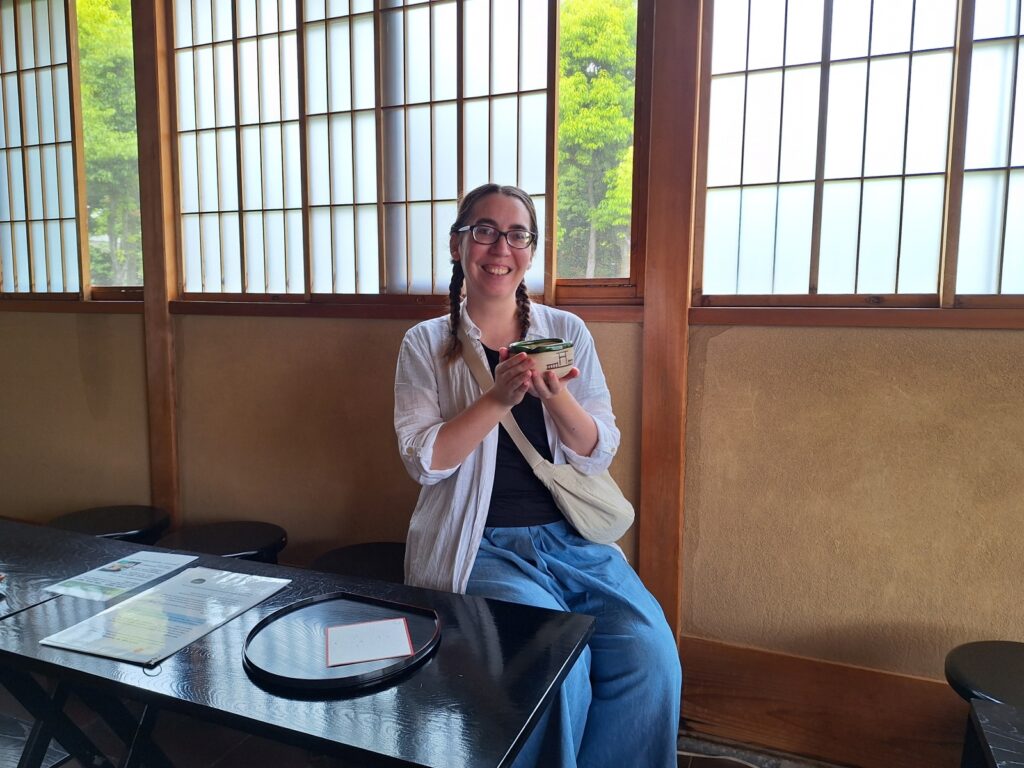
Mindful Eating While Traveling
Travel + food go together like peanut butter and jelly. Each meal tells a story, blending culture, history, and tradition. But are you truly savoring that story, or is it just another box to check?
Here are ways you can practice mindfulness during meals:
- Savor the First Bite.
Instead of diving in, take a moment for that first bite. Notice the textures, flavors, and aromas. Let these cues bring you into the present. Whether it’s hawker center food in Singapore or a homemade meal in a tiny guesthouse, let that first bite set the tone. - Put the Phone Down.
Photos are great, but don’t let them get in the way of actually enjoying your meal. Sit back, eat mindfully, and focus on the experience rather than viewing your food through a lens. - Support Local and Slow Food.
When possible, dive into the local food culture by prioritizing dishes made with locally sourced ingredients. Not only is this more sustainable, but it also creates a deeper connection with the community around you.
Mindful eating is about making your travel meals a celebration rather than a pit stop. Let each meal be its own adventure.
Mindfulness in Nature Exploration
Exploring nature is one of the purest ways to feel grounded, but it’s easy to get caught up in trying to capture Instagram-worthy shots or rushing trails just to say, “You’ve been there.” Mindfulness helps shift focus from conquering nature to connecting with it.
Try doing these practices next time you’re outdoors:
- Pause and Listen.
Find a quiet spot, sit down (or even stand still), and focus on the sounds around you. Birds chirping, rustling leaves, trickling water…the simple sounds of nature! This act draws you into the moment and alleviates the mental buzz of constant movement. - Practice “Grounding.”
Remove your shoes if appropriate, and feel the earth beneath your feet. Take slow, deep breaths and tune into the sensation. Allow it to anchor you in the present. - Walk Without an Agenda.
Forget the end destination for a while. Wander thoughtfully and let curiosity determine your route. Even well-trodden paths take on a new perspective when you’re fully engaged in the now.
For instance, you might discover how destinations like Borneo’s vast rainforests can offer a unique opportunity for mindfulness while trekking through lush landscapes surrounded by ancient biodiversity.
Bringing intentionality to your time in nature creates a harmonious experience that respects not just the environment, but also your own sense of peace. Let each exploration become less about the photos and more about simply being there.
Final Thoughts: Mindful Travel
Mindful travel doesn’t just happen overnight. It’s a journey within the journey, and like any worthwhile adventure, it’s about the small steps you take daily.
By integrating mindfulness into your travels, you’ll not only increase your personal experiences but also leave a more positive impact on the communities and natural surroundings you explore.
Whether you’re a globe-trotting nomad or an occasional wanderer, practicing mindfulness lets you slow down and truly savor life’s enriching details. Happy traveling!
Save to Pinterest
